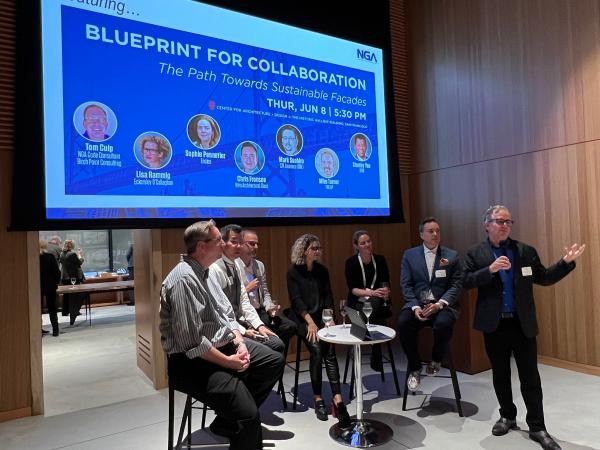Post Time:Jun 16,2023Classify:Industry NewsView:1075

www.glass.org
NGA hosted a panel during the AIA A'23 Conference in San Francisco, held June 6-8, continuing its commitment to educating architects on the potential of glass and glazing products in design.
"Blueprint for Collaboration: The path towards sustainable facades" focused on the future of glass in design for energy performance and sustainability and featured panelists who represent a different area of expertise within the industry. Panelists included Stanley Yee with Dow, Lisa Rammig with Eckersley O'Callaghan, Sophie Pennetier with Enclos, Chris Fronsoe with Vitro, Mark Suehiro with C.R. Laurence and Mike Turner with YKK AP, and was moderated by Tom Culp, owner of Birch Point Consulting LLC, and NGA's energy code consultant.
1. DON’T BUILD, REUSE
One major way to reduce the carbon footprint when it comes to construction is to refurbish and bring new life into existing buildings, rather than constantly building new ones. Globally, the construction industry is responsible for 33% of energy consumption, 35% of waste production and 39% of greenhouse gas emissions. These percentages could be drastically reduced by using buildings that are already standing. Some countries, like France and Germany already have regulations in place that will penalize developers for building new, according to Rammig.
New buildings should also be "designed for disassembly." This means there will be easier recovery of products and materials when a building is disassembled or renovated, meaning less construction, and thus less carbon, will be produced, according to Pennetier.
If a new building must be constructed, then architects and designers should take care to do so consciously. An example of this is architects from SHoP and BVN in Sydney, Australia recently constructed a building with a timber frame, timber inserts and a dual skin facade, allowing for natural ventilation.
2. REDUCE CARBON FOOTPRINT
The embodied carbon produced during the manufacturing of facade glass could be reduced during the collection of raw materials by reducing natural gas consumption in material extraction, reducing transportation from mine to manufacturing locations and exploring the global warming potential (GWP) of different raw material sellers. It could also be reduced during the actual manufacturing and production of glass by utilizing recycled cullet to reduce fuel consumption (lower melting point). A few pioneering glass manufacturers are using oxy-fuel technology in production, which can reduce energy consumption in glass melting furnaces by as much as 20% and cut greenhouse gas emissions in half.
Operational carbon could be reduced by using tinted glass to conserve energy, as well as high performance, low-e, double pane or triple pane insulated glass units.
3. USE A HOLISTIC APPROACH
"We can only do all of this if we also make materials in a sustainable manner," Yee said during the panel. "It's a backward integrated process."
Sustainable practices should start at the beginning. Companies can document steps towards carbon neutrality in a Qualifying Explanatory Statement (QES).
4. COLLABORATION EARLY-ON IS KEY
Everyone at a company on the product/envelope teams needs to collaborate early on when it comes to sustainability goals on a project. Teamwork is key, from sketch to completion. Companies should also take efforts to seek out manufacturers and other partners who align with these goals.
"I define prosperity as the relationships we build along the way," Turner said at the panel. "Build projects that meet all these needs."
5. INCORPORATE GOOD DESIGNS
Companies should not have to compromise aesthetics because if it doesn’t look good, even if it meets all these goals, architects still won't want it, according to Suehiro. Products like thermally improved rails and thermally broken doors are modern ways to incorporate popular and aesthetically pleasing design, while still being able to meet sustainability goals.
Source: www.glass.orgAuthor: shangyi